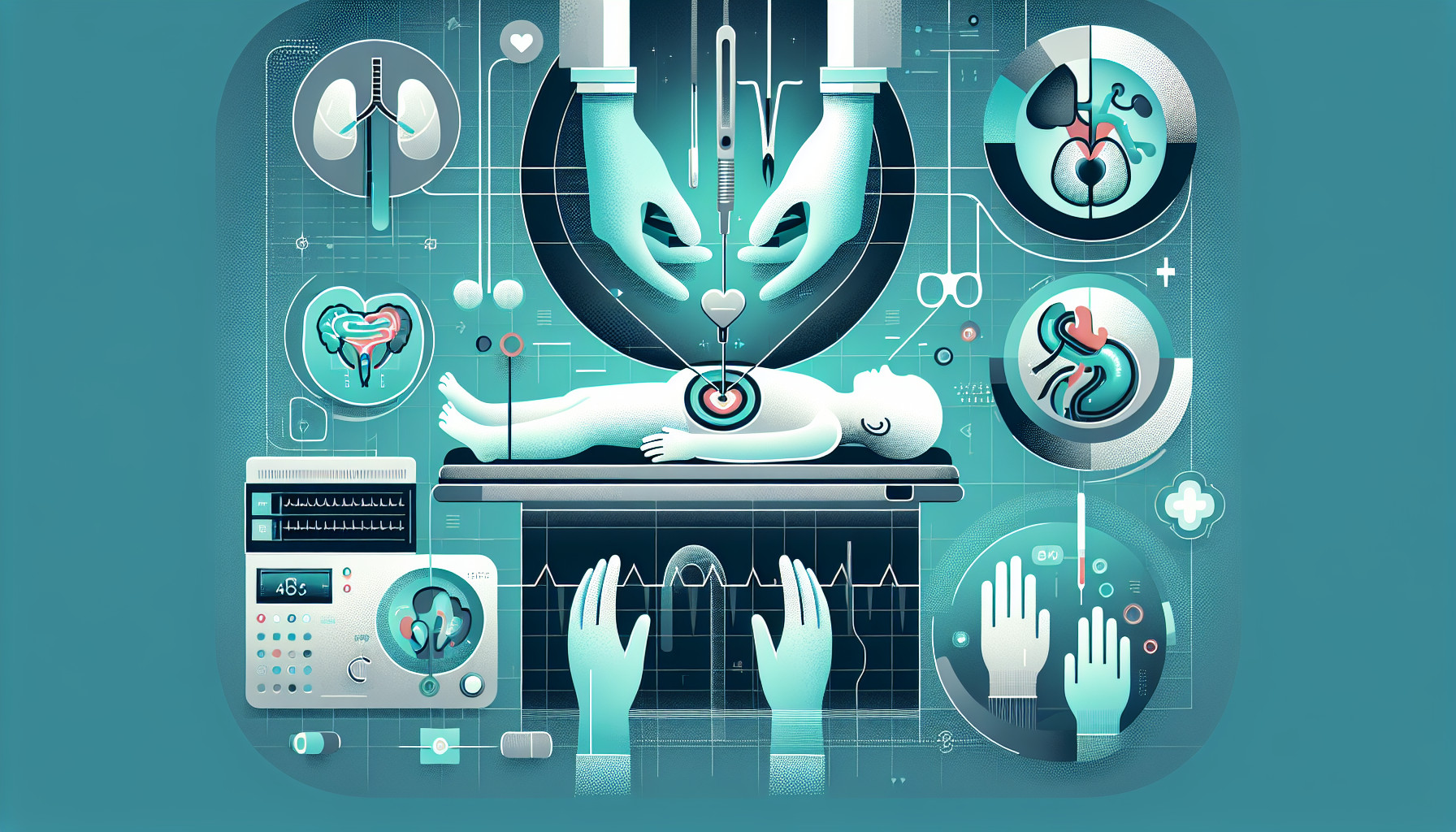Our Summary
This research paper discusses a new technique for repairing inguinal hernias in children using a minimally invasive method called needlescopic surgery. The study involved 369 children who had this surgery in six different pediatric centers from 2016 to 2019. The surgery, which involves disconnecting the hernia sac and closing the peritoneum with a special type of stitch, was found to be successful and safe. There were no instances of the hernia recurring or any negative effects on the testicles, and the scars were almost invisible three months after the surgery. The surgery was also relatively quick, taking an average of 23 minutes for cases with hernias on both sides and 14 minutes for cases with a hernia on one side. The researchers concluded that this new needlescopic surgery technique is a feasible and safe option for pediatric inguinal hernia repair, with excellent cosmetic results.
FAQs
- What is the new technique for repairing inguinal hernias in children mentioned in the research?
- How successful and safe was the needlescopic surgery technique in the study?
- What were the average durations of the surgery for cases with hernias on both sides and for cases with a hernia on one side?
Doctor’s Tip
A helpful tip a doctor might tell a patient about pediatric hernia repair using needlescopic surgery is to follow post-operative care instructions carefully to ensure a smooth recovery. This may include avoiding heavy lifting or strenuous activities for a certain period of time, keeping the incision area clean and dry, and attending follow-up appointments with the surgeon to monitor healing progress. It is also important to watch for any signs of infection, such as redness, swelling, or increased pain, and to contact the surgeon if any concerns arise. By following these guidelines, patients can help ensure the best possible outcome from their hernia repair surgery.
Suitable For
Pediatric patients who are typically recommended for pediatric hernia repair include infants, children, and adolescents who have been diagnosed with inguinal hernias. Inguinal hernias are common in pediatric patients, especially in premature infants, and are more common in boys than girls. Pediatric patients with inguinal hernias may present with symptoms such as a bulge or swelling in the groin area, discomfort or pain, and in some cases, the hernia may become incarcerated or strangulated, requiring urgent surgical intervention.
Pediatric patients with inguinal hernias are typically recommended for surgical repair to prevent complications such as incarceration or strangulation, which can lead to bowel obstruction and potentially life-threatening consequences. Surgical repair of inguinal hernias in pediatric patients is generally recommended when the hernia is symptomatic or if there is a risk of complications.
Inguinal hernia repair is one of the most common surgical procedures performed in children, and pediatric patients who are healthy and have no underlying medical conditions are considered good candidates for surgery. The decision to recommend pediatric hernia repair is typically made by a pediatric surgeon after a thorough evaluation of the patient’s medical history, physical examination, and any diagnostic tests that may be necessary.
Overall, pediatric patients who are recommended for pediatric hernia repair are those who have been diagnosed with inguinal hernias and are at risk of complications or experiencing symptoms related to the hernia. Surgical repair of inguinal hernias in pediatric patients is generally safe and effective, with a low risk of complications when performed by experienced pediatric surgeons using appropriate surgical techniques.
Timeline
- Before pediatric hernia repair:
- The patient may experience symptoms such as a bulge or swelling in the groin area, pain or discomfort, and occasionally nausea or vomiting if the hernia becomes incarcerated or strangulated.
- The patient and their parents or guardians will consult with a pediatric surgeon to discuss the need for surgery and the different options available.
- Pre-operative tests and evaluations will be conducted to ensure the patient is healthy enough for surgery.
- After pediatric hernia repair:
- The patient will undergo the minimally invasive needlescopic surgery technique, which involves disconnecting the hernia sac and closing the peritoneum with a special stitch.
- The surgery is successful in repairing the hernia, with no instances of recurrence or negative effects on the testicles.
- The scars from the surgery are almost invisible three months post-operation, providing excellent cosmetic results.
- The surgery is relatively quick, with an average duration of 23 minutes for bilateral hernias and 14 minutes for unilateral hernias.
- The patient will have a follow-up appointment with the pediatric surgeon to ensure proper healing and address any concerns or complications.
What to Ask Your Doctor
Some questions a patient should ask their doctor about pediatric hernia repair using needlescopic surgery include:
- What are the benefits of needlescopic surgery compared to traditional open surgery for pediatric hernia repair?
- What are the potential risks or complications associated with needlescopic surgery for pediatric hernia repair?
- How long is the recovery time after needlescopic surgery for pediatric hernia repair?
- Will my child experience any pain or discomfort after the surgery, and how can it be managed?
- Will my child need to stay in the hospital overnight after the surgery?
- Are there any specific post-operative care instructions I need to follow for my child?
- How soon can my child return to normal activities, such as school and sports, after the surgery?
- What follow-up appointments will be necessary after the surgery?
- Are there any long-term effects or considerations to be aware of after undergoing needlescopic surgery for pediatric hernia repair?
- How experienced is the surgical team in performing needlescopic surgery for pediatric hernia repair, and what is their success rate with this technique?
Reference
Authors: Shalaby R, Negm M, El-Sawaf M, Elsaied A, Shehata S, Hamed A, Shehata S, Radwan AB. Journal: Surg Laparosc Endosc Percutan Tech. 2021 Oct 4;32(2):272-278. doi: 10.1097/SLE.0000000000001001. PMID: 34608108
